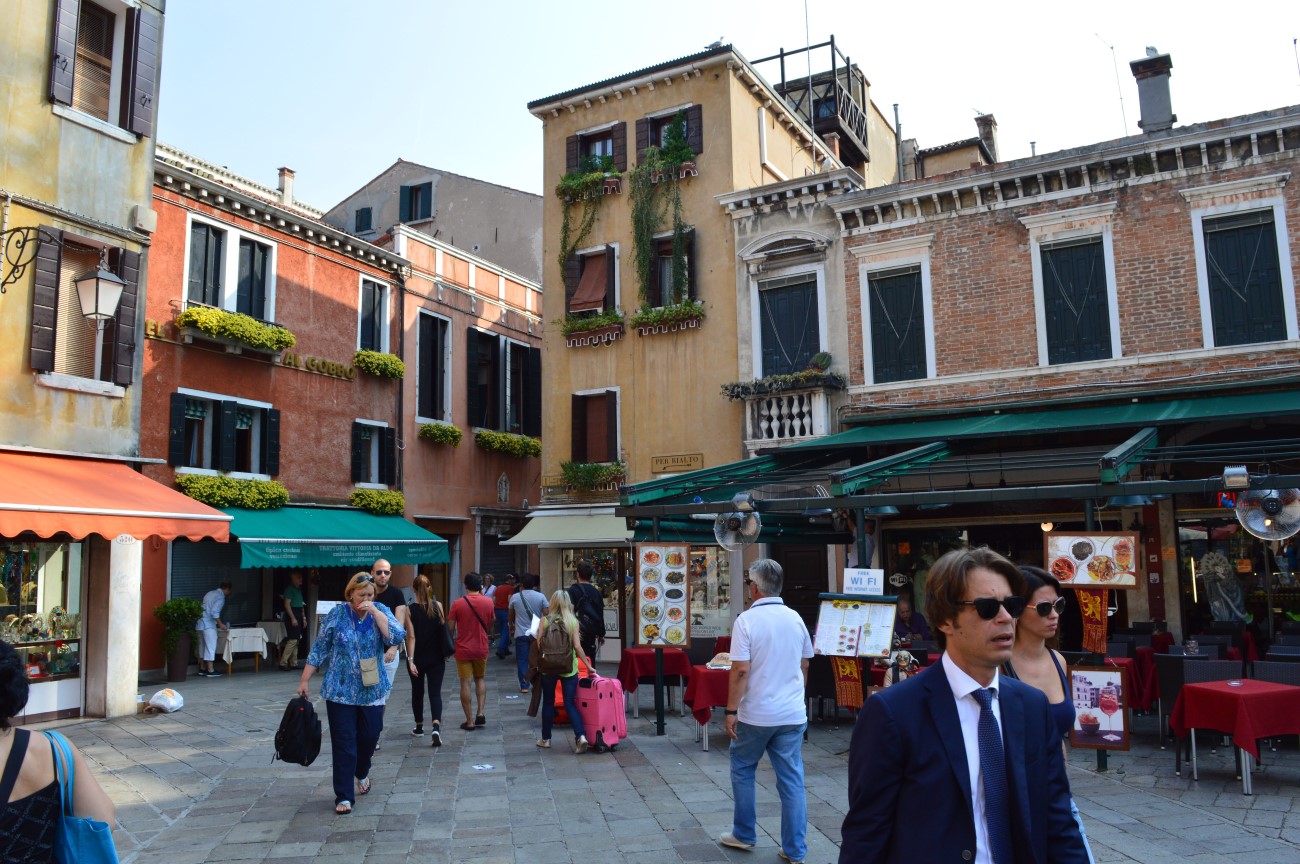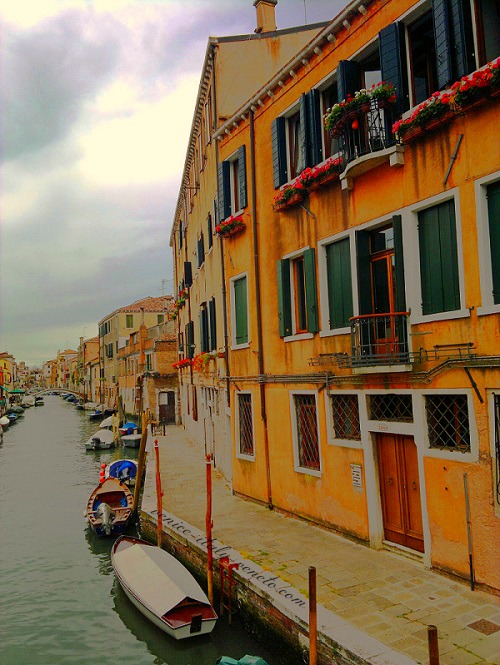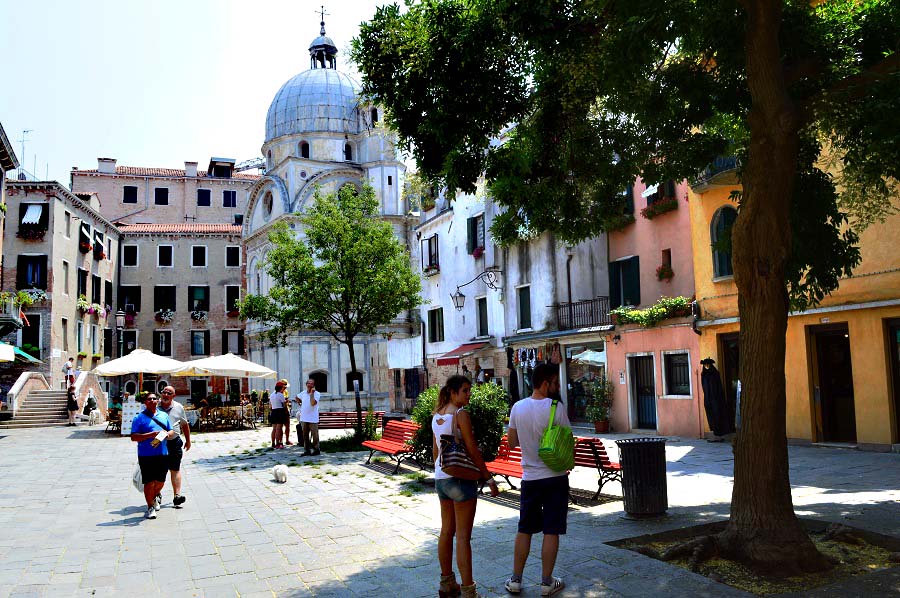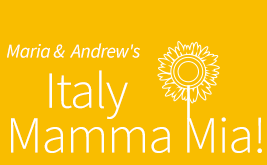- Home
- Secrets of Venice
- Cannaregio Venice
Join A Secret Italy
You come to Italy thinking it will be a trip. You leave knowing it was a beginning
Cannaregio: Venice's Best Kept Secret
Embarking on a journey through the intricate maze of Venice is akin to stepping into a canvas painted by time itself. Amidst the labyrinthine alleys and rippling canals, one district stands out like a hidden gem waiting to be discovered—Cannaregio.
In my opinion, this is the best-kept secret in Venice.
Why do I say that? Well, Cannaregio offers an authentic Venetian experience that unfolds like a symphony of history, culture, and local life. If that is not enough, it gets even better, because in Cannaregio you won’t find the
tourist crowds that are so common in other parts of Venice. That makes it so much easier to enjoy, to soak up the atmosphere in relative tranquility without being trampled by tour groups and selfie maniacs.
Cannaregio is the area by the train station - for a map of Venice click here.
Cannaregio's Hotels
Choosing Cannaregio for your stay means immersing yourself in the true Venetian lifestyle; you become a part of the rhythm of the local existence—waking up to the soft lapping of water against ancient facades and venturing out to discover traditional trattorie and coffee bars that only the locals know about. When it comes to places to stay, the Hotel Abbazia (click for more) and the Foscari Palace Hotel (view details) are my recommendations.
What to See?
The Ghetto
Let me tell you about one of the places in Venice that truly captures my heart every single time: the historic Jewish Ghetto in our beloved Cannaregio.
Andrew and I often wander here when the crowds around the Rialto feel like too much. It’s a different world. You can feel it the moment you step into the shadow of its narrow calli—the air is thick with stories. This was the first ghetto in the world, established in 1516, and walking these same cobblestones today… well, it always gives me goosebumps.
It’s not a sad place, though. No. To me, it’s the most powerful symbol of forza, of strength. Look up! You’ll see the windows of the ancient synagogues tucked quietly above the everyday shops. They whisper a story of a community that held onto its faith and identity with incredible grace, against all odds.
I always pause in the main square, the Campo del Ghetto Nuovo. I watch children playing football where history’s deepest struggles unfolded, and it fills me with so much hope. It’s a beautiful, living reminder that light always finds a way.
Promise me you’ll take a moment to just sit and listen when you visit. You’ll feel the resilience in the very stones. It’s a quiet lesson in courage that I carry with me long after I’ve gone home.
Here is my guide to the Jewish Ghetto.
Ca’ d'Oro
Now, let’s talk about a true fairytale on the water—the breathtaking Ca’ d’Oro. You simply cannot miss it as you glide down the Grand Canal. It’s my absolute favorite palazzo!
They call it the "Golden House," and let me tell you, when the sun hits that lace-like facade… Mamma mia! It truly shimmers like a jewel box. It’s the most stunning example of our Venetian Gothic style—all delicate arches and intricate stonework that make you wonder how human hands could ever create something so beautiful.
I pop into the gallery inside whenever I can. It feels like visiting the magnificent home of a noble family, not some stuffy museum. And the art! They have a heartbreakingly beautiful San Sebastiano by Mantegna that just steals your breath away. But honestly, sometimes I get distracted by the views of the canal from the windows—it’s a living painting itself!
It’s a perfect glimpse into the boundless grandeur and artistry of old Venice. You must see it for yourself!
Santa Maria dei Miracoli
Santa Maria dei Miracoli (Saint Mary of Miracles) is known as the marble church for its beautiful marble facade, adorned with delicate shades of pink and white. It is a masterpiece of meticulous craftsmanship.
A quick tip from us: try to visit either first thing in the morning or in that golden hour just before the sun starts to dip. That’s when the light hits the marble just right and makes the whole thing seem to glow from within. It’s nestled in the loveliest, quietest little square with a canal lapping right at its side—it feels a world away from the crowds.
Do note the hours: it’s generally open 10 to 5, but if you’re planning a visit for a Sunday, remember it’s only open for worshippers attending mass. Any other day is perfect for soaking in its quiet beauty.
Palazzo Labia
I really like this Palazzo; amazingly, many guidebooks don’t even mention it at all, yet it is only 300 meters from the main station where many tourists arrive.
The building dates back to the 17th century. Built by a very rich Spanish family, allegedly trying to buy their way (without much success, I believe) into the Venetian aristocracy, as you step through its opulent gates, you're transported to a world where art, opulence, and history converge. This lavish palace captures the essence of a time when Venice was a hub of wealth and cultural flourishing.
The palace's opulent interiors offer a glimpse into a world of aristocratic indulgence. Lavish frescoes and ornate decorations adorn its halls, whispering stories of opulent parties, cultural gatherings, and the allure of a bygone era. As you explore the chambers and salons, you'll sense the echoes of laughter and conversations that once filled these grand spaces.
Palazzo Labia is a splendid building and pretty unique, being one of the few buildings with facades on three sides and facing onto two canals—the Grand and Cannaregio Canals. The magnificent ballroom is without a doubt the highlight.
After the Sights?
Walk around the neighborhood and eat at one of the affordable restaurants (my suggestion would be the Trattoria alla Vedova). However, Cannaregio boasts a variety of osterias and trattorias where you can savor authentic Venetian cuisine. Try traditional dishes like sarde in saor (sweet and sour sardines) or risi e bisi (risotto with peas) and do some shopping.
When it comes to eating, drinking, and shopping, this is a good area; it is about as affordable as Venice gets, and you are likely to find as many locals as tourists in the shops and restaurants.
Cannaregio was once the heart of working-class Venice, but it has recently started to become trendier, with more fashionable bars and restaurants opening all the time. Hopefully the character of the place doesn’t change too much; I like it just the way it is.
For more photos of Cannaregio, click here.
Essential Tips for Your Cannaregio Adventure:
 Strada Nova in Venice
Strada Nova in VeniceMorning Serenity:
The early hours are a magical time to explore Cannaregio. As the district awakens, you'll have the chance to experience its tranquil side, away from the daytime crowds.
Hidden Corners Await:
Venture beyond the well-trodden paths and discover hidden treasures. Campo Santa Maria Nova and the Church of the Madonna dell'Orto are among the district's lesser-known gems.
Unveiling an Incredible Fact:
Did You Know? The Strada Nova, a bustling street in Cannaregio, was designed to connect the railway station to the Rialto Bridge in the 19th century, at a time when Venice was under Austrian rule. Its construction transformed the district's dynamics, providing a bridge between Venice's historical past and its modern pulse.
In Closing: An Authentic Venice Awaits:
This isn't the Venice of the postcards; this is the real Venice, where life happens. Staying here means you get to wake up to the sound of neighbors chatting in the campo and the smell of espresso from the local bar. It’s your chance to live like a Veneziano, even if just for a few days. You’ll come for the sights, but you’ll leave with stories from the lovely shop owners and a piece of Venice forever in your heart. Trust me, the magic is here!
Please Book with Us... Maria here, if you enjoy my site I'd love your support.
Simply book your next trip anywhere (not only to Italy) via the link below or with any of the hotel links on the website.
You'll get the best deal available and the income I receive helps me to remain independent and to keep bringing you more of beautiful Italy.
More Travel Tips:
- Book your tickets to museums and other attractions in advance on Tiqets.com
- Book your accommodation. Booking.com and Agoda help you to book accommodation in advance
- Book your excursions. Wherever you go, make the most of your time! Excursions with professional guides will help you do this - choose a location and the best option for yourself on Viator or Getyourguide
- Book your car. At least a month before is best. Use Discover Car Hire.
- Cash Back on Flights: Great deals & money back with WayAway
- Get peace of mind when traveling. Get insured with VisitorsCoverage.com
- Home
- Secrets of Venice
- Cannaregio Venice



























New! Comments
Have your say about what you just read! Leave me a comment in the box below.